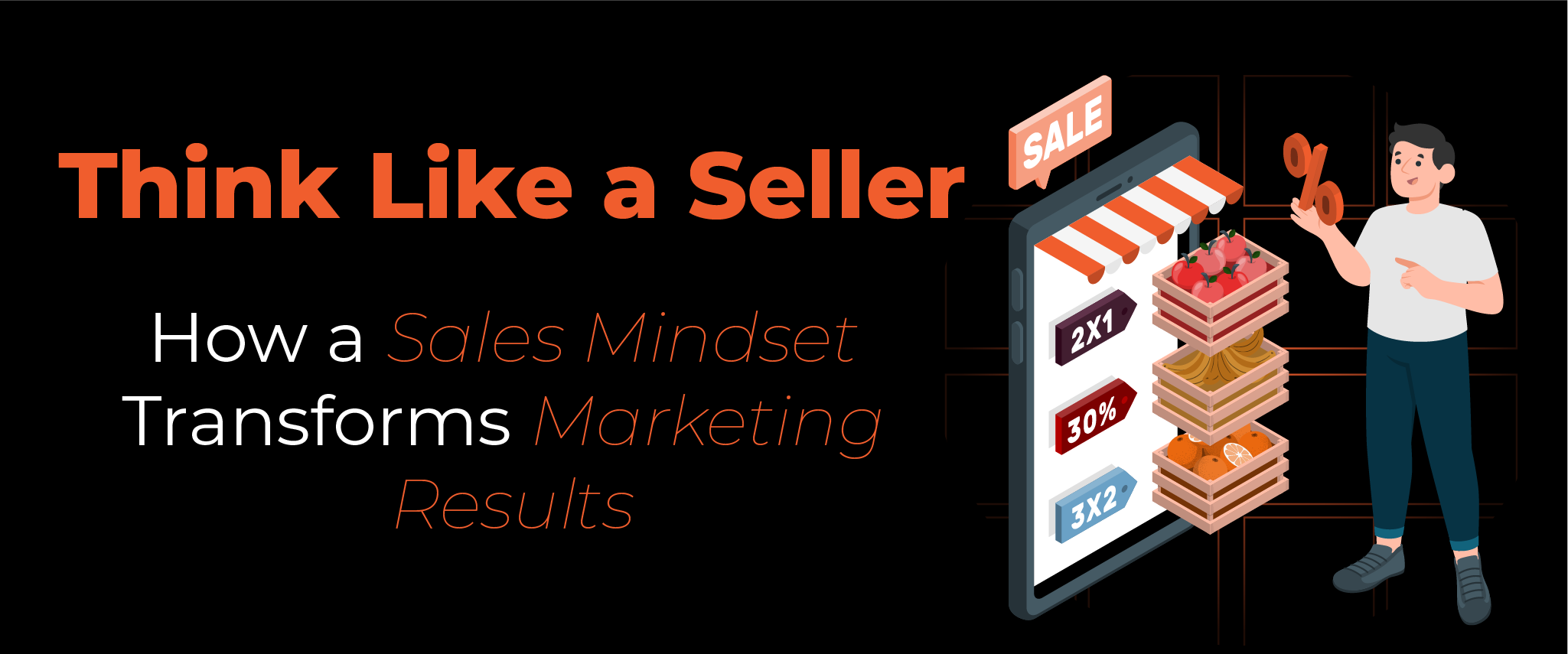
Have you ever thought about how closely marketing and sales are linked?
If you’re marketing something with a short sales cycle—like toothpaste or a can of cola—marketing is the sales process. The message, the packaging, the placement: that’s what moves product. There’s no sales rep needed to convince someone to buy a cold drink.
But what happens when you’re selling B2B technology or high-end consumer goods? Basically, anything that requires a salesperson?
Here, the game changes completely. In long, complex sales cycles, marketing isn’t the end-to-end engine—it’s the fuel. You’re not closing the deal; you’re enabling the conversations that move it forward. You’re part of a broader sales journey—and unless you understand that journey, you’re flying blind.
If you’re a marketer in this world and don’t grasp how sales conversations unfold, what drives momentum, and what stalls it—you’re missing the nuance that makes the difference.
Why Marketing’s Role Changes With the Sales Cycle
In fast, simple sales cycles, marketing owns the outcome.
In long, complex buying journeys, marketing needs to enable decisions over time. That means:
- Supporting the entire decision-making process, not just the first impression.
- Understanding when and how buyers engage, pause, seek internal alignment, and eventually make a choice.
- Aligning closely with sales—not to be sales, but to speak into the same process.
When marketing understands the rhythm of the sale, it becomes more relevant, more effective—and more powerful in accelerating deal flow.

This is a critical mindset shift. In longer sales cycles, marketing is not the only voice speaking to the customer. Sales conversations, demos, proposals, business cases—all of these shape perception and influence buying behaviour.
So what does this mean for marketers?
It means your messaging needs to complement these conversations—not contradict or ignore them. You can’t talk features when sales is talking business value. You can’t push urgency if sales is navigating a six-month internal approval process.
How Marketers Can Add More Value
To truly support the buying journey, marketers in long sales cycles should focus on three core actions:
1. Understand the Sales Process: Not just the funnel, but the actual conversations. What slows deals down? What pushes them forward?
2. Align Messaging to Decision Stages: Every stage—from problem awareness to vendor selection—requires different messaging. Your role isn’t to generate noise, it’s to answer questions upfront and remove friction from the path to purchase.
3. Enable Sales with Content That Works: Great marketing doesn’t just attract leads. It arms sales with tools that help close deals—case studies, objection handling pieces, proof points, and decision-making guides.
Why This Matters More Than Ever
In complex sales, the biggest cost isn’t lost deals—it’s deals that stall.
If your marketing doesn’t understand what’s happening inside the buyer’s business, you can’t help move things forward.
But when marketing is informed by the real sales cycle, you can:
- Anticipate objections before they arise.
- Create content that accelerates internal discussions.
- Position your brand as a trusted guide—not just a catchy campaign.
Final Thought: Great Marketing Respects the Buyer’s Journey
In short sales cycles, marketing drives the outcome.
In long sales cycles, marketing supports a broader process—and that support only works when it’s based on real understanding.
This doesn’t mean marketing needs to become sales. But it does mean marketers must respect the sales cycle, learn from it, and design campaigns that serve it.
That’s how you shorten buying cycles, strengthen your brand, and become an indispensable part of the revenue engine.
So ask yourself: Does your marketing align with how your customers actually buy?


I¦ll immediately seize your rss feed as I can’t in finding your email subscription link or newsletter service. Do you’ve any? Kindly let me realize so that I could subscribe. Thanks.
Hi Leopold,
I’m struggling to understand what you query is. Would you like us to remove you from the email list or add you to our email list?